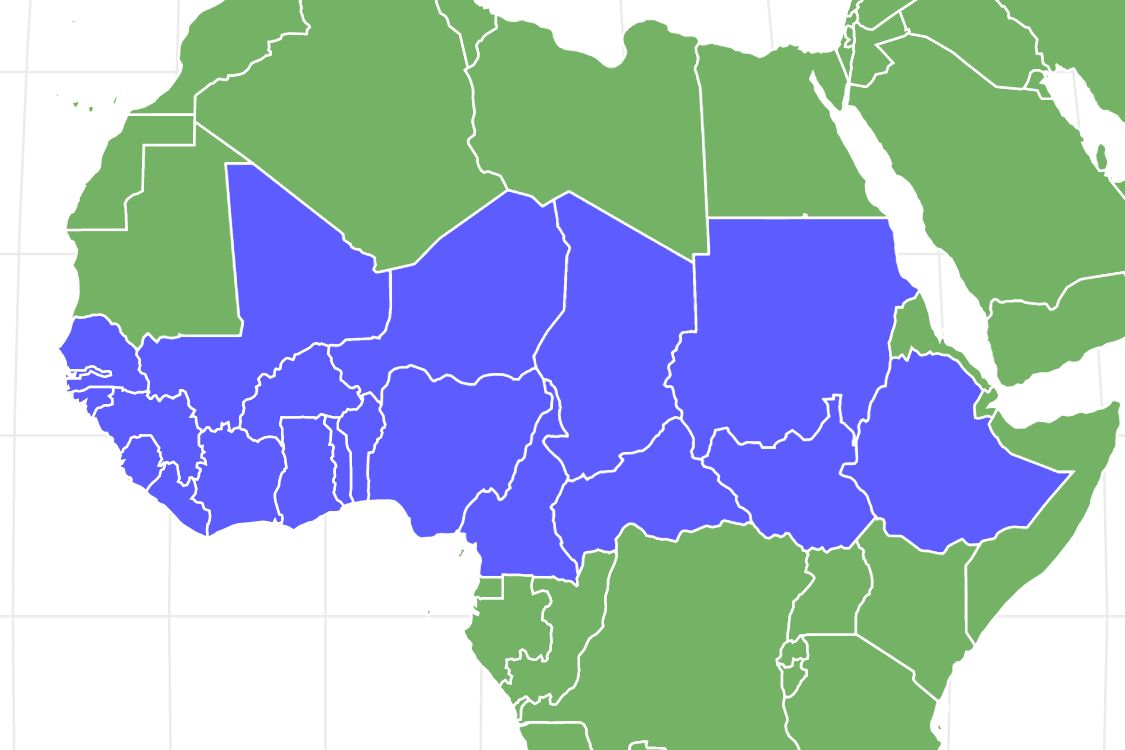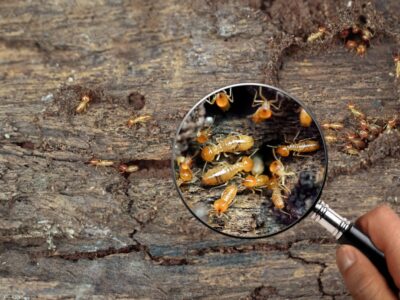Patas Monkey
Erythrocebus patas
The fastest species of primate in the world!
Advertisement
Patas Monkey Scientific Classification
- Kingdom
- Animalia
- Phylum
- Chordata
- Class
- Mammalia
- Order
- Primates
- Family
- Cercopithecidae
- Genus
- Erythrocebus
- Scientific Name
- Erythrocebus patas
Read our Complete Guide to Classification of Animals.
Patas Monkey Conservation Status
Patas Monkey Facts
- Prey
- Fruit, Insects, Eggs
- Name Of Young
- Infant
- Group Behavior
- Troop
- Fun Fact
- The fastest species of primate in the world!
- Estimated Population Size
- Decreasing
- Biggest Threat
- Hunting and capture
- Most Distinctive Feature
- Red back and white moustache and beard
- Other Name(s)
- Military Monkey, Hussar Monkey, Red Guenon
- Gestation Period
- 5 months
- Habitat
- Savanna and open woodland
- Predators
- Leopard, Hyena, Lion
- Diet
- Omnivore
- Average Litter Size
- 1
- Lifestyle
- Diurnal
- Common Name
- Patas Monkey
- Number Of Species
- 1
- Location
- Central Africa
- Slogan
- The fastest species of primate in the world!
- Group
- Mammal
Patas Monkey Physical Characteristics
- Color
- Brown
- Grey
- Red
- Black
- White
- Skin Type
- Hair
- Top Speed
- 35 mph
- Lifespan
- 12 - 20 years
- Weight
- 4kg - 13kg (8.8lbs - 28.6lbs)
- Height
- 45cm - 85cm (18in - 33in)
- Age of Sexual Maturity
- 3 - 5 years
- Age of Weaning
- 6 months
View all of the Patas Monkey images!
Patas Monkey Classification and Evolution
The Patas Monkey is a medium to large sized species of Old World Monkey that is found inhabiting the open grasslands of Central Africa. Also known as the Military Monkey, the Hussar Monkey and the Red Guenon, the Patas Monkey is the only member of its genus due to the fact that it has long limbs and short digits which are adaptations that enable it to run at great speed (something that other Guenon species do not have). Thought to be closely related to Vervet Monkeys the Patas Monkey is found in areas with little cover and simply runs away if threatened. Their long back legs are so powerful that they are able to reach speeds of up to 35mph making them the fastest primates in the world. Due to the fact that Patas Monkeys are found in more open areas, they have not been as affected by deforestation in the same way as many other primates.
Patas Monkey Anatomy and Appearance
The Patas Monkey has a long and slimly built body covered in shaggy fur, which is white in colour on the underside and red on the back. Their long and powerful limbs are also white while their face is dark with a white moustache and beard, and a red cap with a heavy brow ridge that protects their eyes. They also have a distinctive black line that runs from the face up to the ear. Although male and female Patas Monkeys do look remarkably similar, the males tend to be larger in size and have a slight bump that protrudes from their head. Their lengthy limbs, hands and feet coupled with their short fingers and toes make them very adept at running at fast speeds across the open plains.
Patas Monkey Distribution and Habitat
The Patas Monkey is natively found in a broad band throughout Central Africa that is bordered by the Sahara Desert to the north and the moist tropical conditions of the equatorial forests to the south. They can be found as far west as Senegal to Ethiopia in the east and as far south as Tanzania in the east and Cameroon in the west. Patas Monkeys inhabit savanna plains, open woodlands and grass steppe that is well vegetated. They are known to be quite adaptable animals that are also found in arid areas including the southern fringes of the Sahara Desert, flooded deltas and even in moist forest where land has been cleared by people. Due to the fact that Patas Monkeys rely more on the open country than they do dense jungle, they have even been able to move into areas that have been affected by deforestation and can also be found in agricultural plantations.
Patas Monkey Behaviour and Lifestyle
The Patas Monkey is a sociable animal that is found in troops of between 10 and 40 members with only one older, dominant male and the rest being females with their young. Unlike numerous other primate communities, Patas Monkey troops are led by the females who protect their home ranges from intrusion by other troops. Although the males will not usually get involved in these disputes they will sometimes sound a loud warning call to intimidate the rival group. The role of the male Patas Monkey is not only to breed with the females in the group but also to protect them from danger. Males linger on the outskirts of the troop and watch out for approaching danger, acting as a decoy to predators so the females and the young are able to run off and hide. However, despite spending time around them, there is little interaction between males and females outside of the breeding season.
Patas Monkey Reproduction and Life Cycles
Patas Monkeys are able to reproduce at age three for females and between four and five years old for males. They have strict mating seasons which coincide with the winter months either from June to September or October to January depending on the geographic location. After a gestation period that lasts for around five months a single infant is born that is nursed and cared for by its mother. Patas Monkeys become independent of their mother when they reach breeding age when males will leave the troop to either join an all-male juvenile group or will become solitary, until they are dominant enough to challenge older males for positions in troops with females. Young females however, remain in their natal group and will stay close to their mother for their whole lives.
Patas Monkey Diet and Prey
The Patas Monkey is an omnivorous animal that consumes a wide range of both plant matter and small animals in order to survive. They primarily feed on Acacia fruits, galls and leaves along with other seasonal fruits, flowers and tree gum. Patas Monkeys are also known to eat insects, lizards and birds’ eggs along with raiding crops where they are often known to cause damage to the crops themselves. Due to their predominantly terrestrial nature, more than 85% of their food is thought to be collected on ground-level. Depending on where the local population lives water can sometimes be limited which can cause conflict between rival troops as they gather at water-holes to drink. Those populations however, that are found in the flood-lands have less conflict between each other for water.
Patas Monkey Predators and Threats
Although comparatively little is known about the predation of Patas Monkey relative to similar species, it is generally thought that due to their size, they are preyed upon by numerous carnivores that share their habitats. Wild cats such as Leopards, Cheetahs and Lions are probably their most common predators along with Hyena, African Wild Dogs, Snakes and large Birds of Prey that hunt the smaller and more vulnerable young. They are also hunted by people for meat throughout much of their natural range but the biggest threat to Patas Monkey populations is thought to be the capture of them for sale either into the exotic pet trade or to science for medical research.
Patas Monkey Interesting Facts and Features
The smart red coat and solider-like white moustache of the Patas Monkey has led to them also being commonly known as “Military Monkeys”. Despite the fact that deforestation has been devastating for numerous primates not just in Africa but around the world, it has in fact provided more and more suitable areas for Patas Monkeys to inhabit. As they have evolved to life with very little cover, areas of forest that have been cleared by people have led to them being found in regions such as moist forest that they would not normally inhabit. When they are born, young Patas Monkeys are light brown all over and have pink coloured faces, which darken by the time they are about two months old.
Patas Monkey Relationship with Humans
Native people have hunted the Patas Monkey for meat throughout much of their vast natural range for years but they are also hunted for capture and sale into the exotic pet trade and to be sold to medical research. It is estimated that over 1,000 individuals are caught every year which is leading to population declines particularly in certain areas. In others where Human settlements are encroaching further and further into their natural habitats, Patas Monkeys have been known to strip crops, raid plantations for food and simply destroy others which has led to farmers often seeing them as pests. Many Patas Monkeys are shot by people who see them close to or on their land.
Patas Monkey Conservation Status and Life Today
Today, the Patas Monkey is listed by the IUCN as a species that is of Least Concern from becoming extinct in the wild in the near future. However, due to the fact that the global population is not particularly large anyway, increased conservation of the species needs to occur to prevent populations from declining any further. There are 18 national parks and 11 reserves where Patas Monkeys can be found with some measures having been put into place to try and limit the number of individuals that can be captured from the wild.
View all 192 animals that start with PPatas Monkey FAQs (Frequently Asked Questions)
Are Patas Monkeys herbivores, carnivores, or omnivores?
Patas Monkeys are Omnivores, meaning they eat both plants and other animals.
What Kingdom do Patas Monkeys belong to?
Patas Monkeys belong to the Kingdom Animalia.
What class do Patas Monkeys belong to?
Patas Monkeys belong to the class Mammalia.
What phylum to Patas Monkeys belong to?
Patas Monkeys belong to the phylum Chordata.
What family do Patas Monkeys belong to?
Patas Monkeys belong to the family Cercopithecidae.
What order do Patas Monkeys belong to?
Patas Monkeys belong to the order Primates.
What type of covering do Patas Monkeys have?
Patas Monkeys are covered in Hair.
What genus do Patas Monkeys belong to?
Patas Monkeys belong to the genus Erythrocebus.
Where do Patas Monkeys live?
Patas Monkeys live in central Africa.
In what type of habitat do Patas Monkeys live?
Patas Monkeys live in savanna and open woodlands.
What are some predators of Patas Monkeys?
Predators of Patas Monkeys include leopards, hyenas, and lions.
How many babies do Patas Monkeys have?
The average number of babies a Patas Monkey has is 1.
What is an interesting fact about Patas Monkeys?
Patas Monkeys are the fastest species of primate in the world!
What is the scientific name for the Patas Monkey?
The scientific name for the Patas Monkey is Erythrocebus patas.
What is the lifespan of a Patas Monkey?
Patas Monkeys can live for 12 to 20 years.
How many species of Patas Monkey are there?
There is 1 species of Patas Monkey.
What is the biggest threat to the Patas Monkey?
The biggest threats to the Patas Monkey are hunting and capture.
What is another name for the Patas Monkey?
The Patas Monkey is also called the military monkey, hussar monkey, or red guenon.
How fast is a Patas Monkey?
A Patas Monkey can travel at speeds of up to 35 miles per hour.
How to say Patas Monkey in ...
Thank you for reading! Have some feedback for us? Contact the AZ Animals editorial team.
Sources
- David Burnie, Dorling Kindersley (2011) Animal, The Definitive Visual Guide To The World's Wildlife
- Tom Jackson, Lorenz Books (2007) The World Encyclopedia Of Animals
- David Burnie, Kingfisher (2011) The Kingfisher Animal Encyclopedia
- Richard Mackay, University of California Press (2009) The Atlas Of Endangered Species
- David Burnie, Dorling Kindersley (2008) Illustrated Encyclopedia Of Animals
- Dorling Kindersley (2006) Dorling Kindersley Encyclopedia Of Animals
- David W. Macdonald, Oxford University Press (2010) The Encyclopedia Of Mammals
- Patas Monkey Information, Available here: http://pin.primate.wisc.edu/factsheets/entry/patas_monkey
- About Patas Monkeys, Available here: http://animaldiversity.ummz.umich.edu/site/accounts/information/Erythrocebus_patas.html
- Patas Monkey Conservation, Available here: http://www.iucnredlist.org/apps/redlist/details/8073/0


















